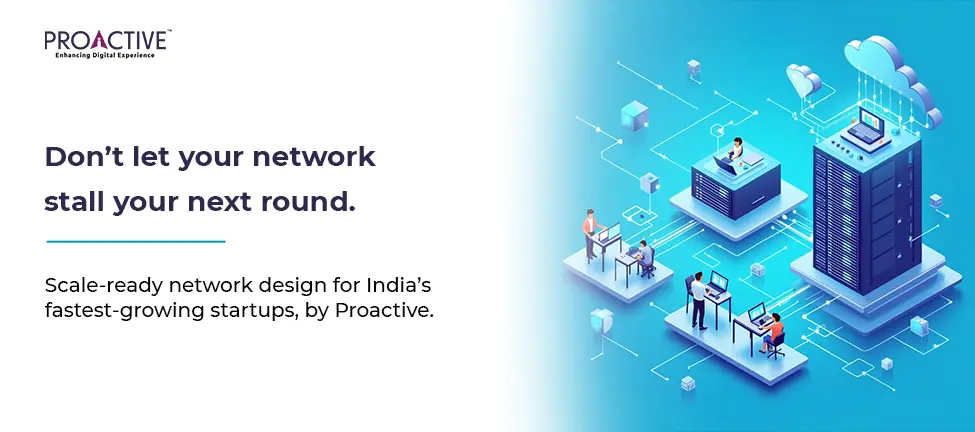Updated: July 14, 2025

Founders in Bengaluru, Noida, and Hyderabad are scaling fast, headcount, funding, and product lines. But most still run on the same Wi-Fi they set up in year one. You ship code at scale, but your network can't handle a Zoom call.
From Series A to IPO, your infrastructure will be tested. Don’t let the weakest link throttle your momentum.
Startups often begin with consumer-grade routers, unmanaged switches, and borrowed IT help. That setup works, until it doesn’t. Once you hit 50 users, run hybrid teams, or connect multiple offices, the cracks show.
That’s not just friction. It’s a risk.
A team of 100 could mean 300+ devices, laptops, phones, IP phones, access cards, and printers. Add IoT, meeting room gear, and guest traffic, and things get messy fast.
Fix it: Deploy Wi-Fi 6 access points built for high-density environments. Use VLANs to segment traffic by department or role.
As you expand into new sites, your core network architecture needs to scale without rewiring everything. MPLS is expensive. VPNs lag.
Fix it: Use SD-WAN to connect branches. Manage everything from a single dashboard. Add new locations in hours, not weeks.
Startups love flexibility. But security policies made on Slack don’t scale. You need role-based access, identity enforcement, and device compliance from the start.
Fix it: Build zero-trust principles into the network. Use Cisco Duo for MFA and posture checks. Define who gets access to what, from where, and how.
Most startups don’t hire a real IT head until things break. By then, the network is a tangle of fixes, not a system.
Fix it: Use cloud-managed networking (Meraki or Catalyst Center) to push updates, monitor health, and run diagnostics remotely. Let automation handle scale.
Troubleshooting blind costs time and money. You should know which apps are failing, which user is hogging bandwidth, and which switch just tripped, all in one place.
Fix it: Choose platforms that offer full-stack visibility. Integrate analytics and alerts into Slack, email, or dashboards. Turn noise into signals.
They buy gear, not a roadmap. They treat the network like a one-time setup, not a living part of scale. And they wait too long to upgrade.
If you’re raising a round to grow from 50 to 500, and your router can’t handle more than 100 connections, you’re funding failure.
We’ve helped startups in Gurgaon, Pune, and Chennai scale their network from co-working floors to campus buildings. We don’t just sell Cisco. We run onboarding, automation, and always-on support.
Our clients use cloud-managed Cisco stacks to grow faster, with fewer IT tickets, no rewiring chaos, and better investor confidence in security posture.
Don’t let your product team outgrow your packet flow.
If the answer is no, fix it before you scale it.